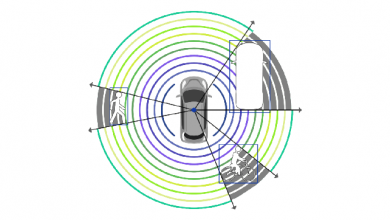Apio Systems on using smartphones in a Situational Awareness Platform
We do not need to wait many years for the safety benefits of autonomous driving to become available. One of the ways we can turbo charge the advent of the connected and self-driving car dramatically, is by turning the sensor-laden smartphones and tablets that drivers already have into a Situational Awareness platform.
-Sascha Simon, CEO | Apio System
The quest for safety started the movement toward smart driving, beginning with the first post-crash safety technology, which provided seat belts and crumble zones in cars. Since then, automotive safety technology has moved from mitigation after a crash toward pre-crash safety technology that actively prevents crashes from occurring. Additional safety benefits are realized by utilizing a “sensor fusion” approach that combines existing sensors to introduce new functions without the need for additional expensive hardware.

The next logical step begins the movement toward autonomous driving: integrating sensors and intelligence for wide ranging in-vehicle sensor fusion, interpretation of integrated sensor output, improvement of image recognition algorithms, and autopilot functions. Given what is technologically feasible today, it will not be a huge leap to achieve some limited autopilot functionality by integrating sensors and intelligence in otherwise disparate systems, such as lane keeping, intelligent cruise control and collision prevention technology.
The first incarnation of the autonomous car will be most likely in the military sector where the loss of life and resources justify the significant investment. The next sector that will most likely adopt these technologies includes businesses such as large mining operations that need to continuously transport material over unpaved roads in remote places. And finally in major metropolitan areas, where traffic today is a mess, we could have a much higher quality of life and reducing car ownership, by combining autonomous driving with innovative shared vehicle services and algorithms.
Despite the excitement in the news about driverless, fully connected, or autonomous cars, these technologies will not be readily available in the mainstream to the public for many years to come because a) it’s very costly, b) required technology is still in its early stages, c) there is no massive market pull, and d) most of these technologies require an ecosystem that is not in place to be useful. Clearly, many things need to come together before the self-driving car can come to fruition.
By following an ecosystem approach for safer driving, self-driving cars will be possible, the industry gains experience, and there will be driver acceptance of some degree of autonomous drive. This includes: wide adoption of Advanced Driver Assistance Systems (ADAS), powerful image recognition, sensor fusion, connectivity between vehicles, legislative advances, and standards for information sharing.
We do not need to wait many years for the safety benefits of autonomous driving to become available. One of the ways we can turbo charge the advent of the connected and self-driving car dramatically, is by turning the sensor-laden smartphones and tablets that drivers already have into a Situational Awareness platform. Thus, drivers – and fleet operators – can become highly aware of their driving environment and their own driving risks to avoid problems, improve safety, and enhance driving efficiency. These include not just how the driver is driving, but also various road hazards, traffic flows and impediments, and contextual elements, such as accident and crime hotspots, school and hospital zones, weather and so on.
The Crucial Ingredient to Autonomous Driving is Situational Awareness
The Situational Awareness platform transmits autonomously so that the driver is aware of his or her immediate surroundings and receives information of situations ahead. The platform also detected hazards to other drivers and communicates that information to other smart drivers. Read more about it here.
Apio Systems improves driver safety and efficiency through a purpose-built mobile platform to dramatically improve transportation safety, using everyday smartphones and tablets, regardless of the vehicle.
This crucial ingredient to self-driving is Situational Awareness. With Situational Awareness, drivers can be aware not only of their own driving state, but also of their immediate surroundings by receiving information from other vehicles and other participants. Situational Awareness is the next phase of automotive telematics without the need for expensive subscriptions and hardware that requires installation by third parties or OEMs.



